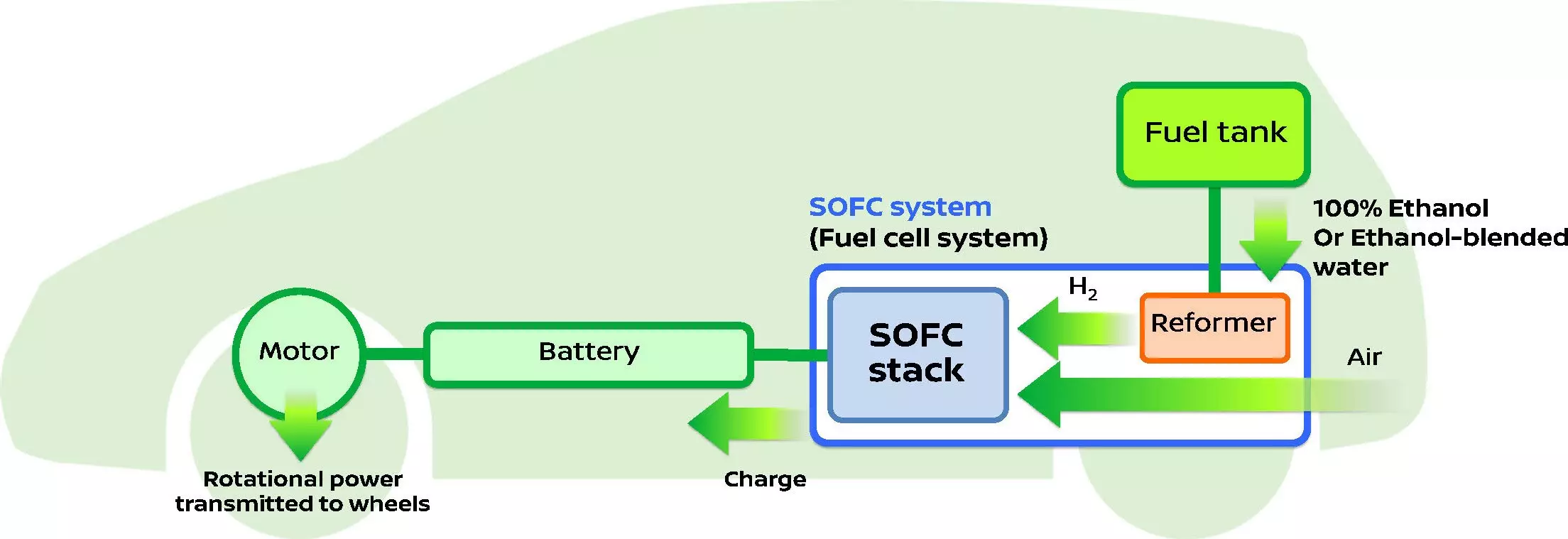Nissan is developing the world's first car powered by solid oxide fuel cells.
In the future, what propulsion technology will cars use? It is one of the (many!) unanswered questions that the automotive industry has been grappling with. Knowing that internal combustion engines have their days numbered, brands have invested hundreds of millions of euros in the development of alternative solutions, ranging from 100% electric cars with battery to others, also 100% electric, but the fuel cell of hydrogen. However, these two solutions suffer from some problems.
In the case of electric cars, it is the autonomy of the batteries and the charging times that have made it difficult to implement this solution on a large scale. In the case of hydrogen fuel cell vehicles (such as the Toyota Mirai) the problem is related to: 1) the mandatory use of high pressure tanks due to the volatility of hydrogen; 2) requires the development of a distribution network from scratch and; 3) hydrogen processing cost.
So what is Nissan's solution?
Nissan's solution is called a Solid Oxide Fuel Cell (SOFC) and uses bio-ethanol as a fuel. Advantage? Unlike hydrogen, this fuel does not need high pressure tanks or special filling stations. SOFC (Solide Oxyde Fuel-Cell) is a fuel cell that uses the reaction of multiple fuels, including ethanol and natural gas, with oxygen in the air to produce electricity with high efficiency.How it works?
The e-Bio fuel cell generates electricity through the SOFC (electric generator) using bio ethanol stored in the vehicle and uses the hydrogen extracted from that fuel through a reformer and atmospheric oxygen, with the subsequent electrochemical reaction producing electricity to power the vehicle . Unlike conventional systems, the e-Bio fuel cell has SOFC (Solide Oxyde Fuel-Cell) as a power source, thus allowing for greater energy efficiency that allows the vehicle to obtain autonomy similar to that of gasoline vehicles (more than 600km).

Additionally, the characteristic electric driving features enabled by the car with the e-Bio fuel cell – including silent driving, a linear start and fast acceleration – allow users to enjoy the comfort of a 100% electric vehicle (VE).
And bio ethanol, where does it come from?
Bio ethanol fuels, including those produced from sugarcane and corn, are available in large quantities in Asia and North and South America. The e-Bio fuel cell, using bio ethanol, It can thus provide an environmentally friendly transport solution and create opportunities in regional energy production, supported by existing infrastructure. With the bio-ethanol system, CO2 emissions are neutralized since the sugarcane growth system, with which the biofuel is produced, allows a “Carbon Neutral Cycle” to be obtained, with practically no increase in CO2.And the cost, will it be high?
Fortunately no. The costs of using this type of vehicle will be similar to those of current EVs. With a reduced refueling time and a great potential to generate electricity, this technology will be ideal for users who need high autonomy and energy, thus being able to support different types of services, such as large-scale distribution.
It is the beauty of innovation in a «pure state». When half the world thought that the industry was going to follow a certain path, announcing hydrogen as the fuel of the future, a new technology emerged capable of putting everything into question. Fantastic times are ahead.
